- europages
- >
- COMPANIES - SUPPLIERS - SERVICE PROVIDERS
- >
- industrial machines
Results for
Industrial machines - Import export
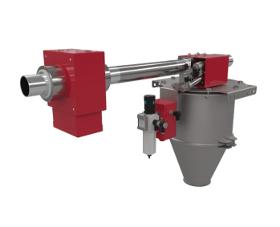
MESUTRONIC GMBH
Germany
- detects and separates any type of metal, loose or encapsulated - flexible integration into existing conveying systems independent of direction, quick and cost-effective -easy to operate - high-precision metal detection, extremely reliable - uncompromising safety, thanks to mesuSafetyPack
Request for a quote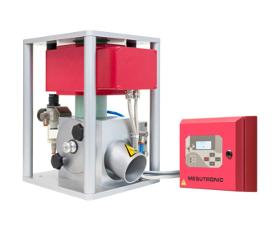
MESUTRONIC GMBH
Germany
metal separator was developed for the examination of plastic granulates, ground material and powders for metallic foreign bodies. It is used in the injection molding and extrusion areas for slow-flowing material columns. Both the detector and the ejection unit have been specially developed for this area of use. This results in top performance data for precision, operating reliability and ease of cleaning. Failsafe storage of all system parameters Digital signal processing for best detection Process- and condition monitoring Standardised system for a wide area of use Robust construction for maximum lifetime Highest precision in long-term operation Fast ejector for minimized material loss Dismantle without tools All components are easily accessible
Request for a quote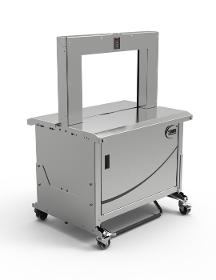
SIGNODE PACKAGING SYSTEMS GMBH - BUSINESS UNIT SMB SCHWEDE MASCHINENBAU
Germany
User-friendly and intuitive Economical owing to highest availability Robust and extremely low maintenance Variable strap width Stainless steel configuration 60 cycles per minute, with High-Speed Kit (optional) ASLF 'Anti-Strap-Loss-Function' Constant strap control Automatic cycle start by tabletop sensor (optional) Automatic Strap feed Strap width 5 - 12 mm, either Strap end detection system with automatic discharge of remaining strap Automatic strap tensioning (optional) Coil holder inside (either externally) Operation Terminal with Soft-Button DAT 'Direct-Access-Technology' The exclusive eject function avoids strap jam Torque controlled strap tension, adjustable Single-Copy-Strap Foot-bar at the operator side Machine movable MFT 'Mono-Frame-Technology' Power connection top (either bottom) Table height steplessly adjustable Table top front hinged by 270 °, removable Wear-free, energy saving direct-drive-motors Low maintenance and low wear strap arch Many specific options...
Request for a quote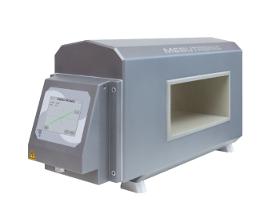
MESUTRONIC GMBH
Germany
TUNNEL METAL DETECTOR WITH INTEGRADTED EVALUATION ELECTRONIC -USED IN BELT CONVEYORS FOR QUALITY CONTROL OR MACHINE PROTECTION. Detects all metals encapsulated or as loose parts. The new performance benchmark! imagePHASE visualizes your product and is a synonym for highly accurate metal detection at maximum reliability. Impressive simple operation. Minimal floor space required (reduced metal-free area) due to mesuCAGE technology. Compliant with quality assurance according to HACCP, IFS, BRC, SQF. Specifically tailored system solutions with reliable conveying technology and selected accessories.
Request for a quote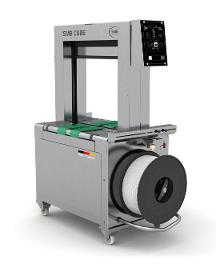
SIGNODE PACKAGING SYSTEMS GMBH - BUSINESS UNIT SMB SCHWEDE MASCHINENBAU
Germany
Economical owing to highest availability Robust and extremely low maintenance Easy handling Minimum space requirement Stainless steel configuration ASLF 'Anti-Strap-Loss-Function' Constant strap control Strap width 5 - 12 mm, either DAT 'Direct-Access-Technology' The exclusive eject function avoids strap jam Torque controlled strap tension, adjustable Upstream and downstream interlocks Conveyor speed steplessly adjustable Belt type or roller conveyor Stainless steel welding plate, low maintenance GreenTech energy concept, low power consumption High-Speed-Kit, optional Intuitive operator interface MFT 'Mono-Frame-Technology' Bundle press, optional SAO 'Safe and Open' - Safe without protection doors Bundle flow control Wear-free, energy saving direct-drive-motors Low maintenance and low wear strap arch Many specific options available, easily configurable
Request for a quote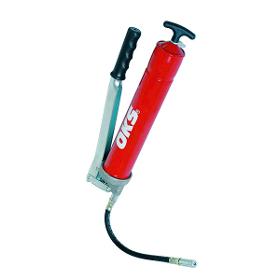
OKS SPEZIALSCHMIERSTOFFE GMBH
Germany
Grease lubrication of all important parts Maintenance of mechanical and industrial machines Advantages and benefits Long and strong hand lever with plastic grip Grease press barrel smooth and without internal profiling Stable grip at the plunger rod that prevents bruising Grease press barrel and rear cover form a unit (in order to prevent accidents) Limit stop for the plunger rod Mounting of firm nozzle tubes easily possible Suitable for grease up to NLGI 3
Request for a quote
GEBR. DÜRRBECK KUNSTSTOFFE GMBH
Germany
Plastic film for automatic packing machines is primarily used for the following: E-commerce: as rolls for despatch packaging where the product is automatically wrapped in film, as new packaging for returned goods, etc. Pharmaceutical industry: for bundling and thereby securing the shipment of multiple packages Sanitary products: for packaging paper towels and tissues, nappies and other sanitary items Insulation industry: for packaging insulation boards using stretch packing machines Food industry: food packaging machines (frozen foods, fruit, vegetables, etc.)
Request for a quote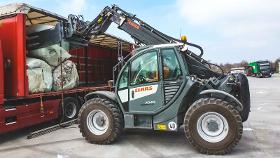
KAUP GMBH & CO KG
Germany
Construction machines must be flexible in use. Whether in civil engineering, demolition, gardening and landscaping, recycling and waste management or in the forestry and timber industry: construction machines are used in a variety of ways to achieve high profitability and economic efficiency. KAUP offers a wide range of attachments for construction machines - almost every attachment can be combined with a wheel loader, skid steer loader, telescopic loader, wheeled excavator, crawler excavator or any other construction machine.
Request for a quote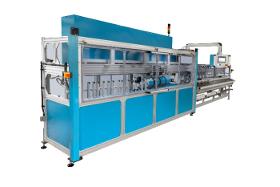
METZNER MASCHINENBAU GMBH
Germany
The special Metzner development is a fully automatic machinery consisting of a contact-free loop control, an automatic cutting machine and a crushing station with storage system. It can produce polystyrene pipettes with diameters from 4 to 25 mm and lengths from 100 to 700 mm. The extruded material is first scored with the aid of several rotary cutting heads, then broken and finally deposited in collecting containers. The cycle time for four parts is only 1.5 seconds. For the production of short lengths (up to 120 mm), the cycle time is extended to approximately three seconds.
Request for a quote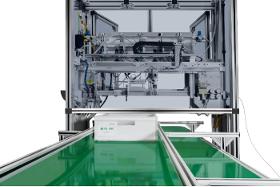
METZNER MASCHINENBAU GMBH
Germany
An internationally active medical technology company that produces and sells catheter tubes, among other things, has optimized its manufacturing process with the help of a production line from Metzner Maschinenbau. With Metzner's know-how, it was possible to replace a costly manual process with an automatic machine, saving costs. At the same time, the length accuracy and the cutting quality were significantly improved. The company supplied a fully automatic system that precisely cuts the catheter tubing to length, removes the mandrel present from the extrusion without leaving any residue and without longitudinal expansion, and then deposits the tubing in a collecting container at the end. Processing with exact length accuracy and mandrel removal The Metzner special development cuts catheter tubes to an exact length and removes the mandrel inside safely and precisely. The finished material is deposited in a collection container.
Request for a quote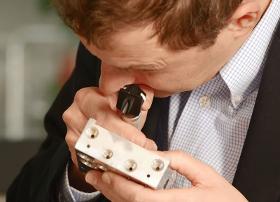
PERO AG
Germany
By documenting the required technical cleanliness and the processes of your chosen method, you obtain an unrivalled level of process safety at an early stage. You know that you will achieve the necessary technical cleanliness long before you integrate the cleaning unit into your production plant.
Request for a quote
PERO AG
Germany
At the PERO laboratory for technical cleanliness that forms part of our Centre of Competence, we analyse and assess the outcomes of the cleaning tests. Analytical lab, vacuum drying unit, testing instruments Examination under light microscope Assessment of cleanliness analyses according to VDA 19 and other standards
Request for a quote
PERO AG
Germany
At our Centre of Competence measuring 1,100 square metres, there are more than 15 testing units at your disposal for the optimisation of your cleaning processes. Batch units for parts carriers up to 660 x 480 x 300 mm in size Tunnel cleaning unit Cleaning units for large parts up to approx. 2,100 mm in width and 1,500 kg in weight Test and compare various media and alternative cleaning processes Get to know efficient parts handling methods and equipment
Request for a quote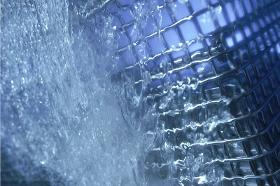
PERO AG
Germany
Bring your dirty parts to the PERO Centre of Competence. The cleaning experts of PERO will advise you in how these parts can best be cleaned. You can then perform a series of tests in order to identify the optimised cleaning process for your parts. Cleaning tests free of charge, using your own parts; including documentation Evaluation of cleanliness analyses Gaining new insights into own cleaning processes
Request for a quote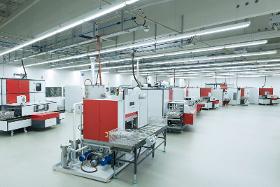
PERO AG
Germany
PERO Centre of Competence in Königsbrunn in a dedicated area measuring 1,100 m², there are more than 15 separate units available for parts cleaning tests. PERO Centre of Competence in Königsbrunn in a dedicated area measuring 1,100 m², there are more than 15 separate units available for parts cleaning tests. In manufacturing plants, parts cleaning is one of the key activities along the production line. The productivity of a manufacturing plant is determined by the availability of the cleaning technology. At the PERO Centre of Competence, PERO specialists work together with operators to develop the cleaning method that best suits their needs.
Request for a quote
PERO AG
Germany
To develop a cleaning solution that meets the specifications, PERO engineers identify the best wet cleaning method and devise the sequence of the process steps as well as the process parameters. The effectiveness and efficiency of the chosen process is then verified by test runs performed at the PERO Centre of Competence.
Request for a quote
PERO AG
Germany
To achieve the required technical cleanliness, the parts must be correctly handled and placed in the cleaning unit. This is normally done by using special parts carriers that can withstand the cleaning conditions.
Request for a quoteDo you sell or make similar products?
Sign up to europages and have your products listed
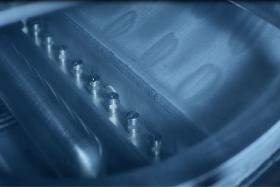
PERO AG
Germany
Hot solvent vapour is applied to the surfaces of the parts where it condensates, forming a solvent film in which dirt is dissolved. As the solvent condensate runs down along the parts, it takes with it the dirt particles (dust, chips, etc.), leaving behind clean surfaces. This physical cleaning effect results in thoroughly cleaned surfaces.
Request for a quote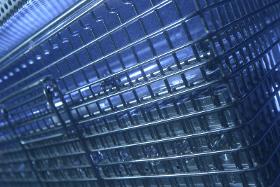
PERO AG
Germany
Sound waves generated by an oscillator agitate the wet medium. This leads to cavitation bubbles that implode at a high frequency and result in hydraulic impacts. These impacts combined with microflows flush particles and pigments off the parts. The costs of ultrasonic cleaning are primarily determined by the processing time. Low ultrasonic frequencies remove coarse dirt, while high ultrasonic frequencies are used to eliminate fine dirt from parts.
Request for a quote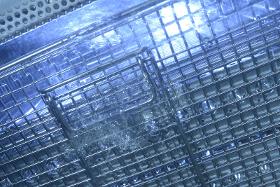
PERO AG
Germany
The parts are immersed in the wet medium. Dirt is dissolved from the surface by the heated wet medium. By moving the parts while immersed, cleaning is assisted by a mechanical effect. In industrial parts cleaning, the surfaces are then normally rinsed and dried.
Request for a quote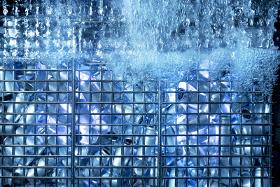
PERO AG
Germany
The parts are flooded by the wet medium kept in motion, so that even persistent dirt is removed.
Request for a quote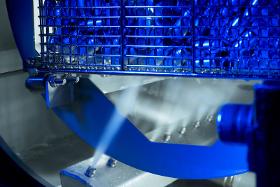
PERO AG
Germany
The wet medium is sprayed through nozzles onto the surfaces of the parts. Particles are removed from the parts by kinetic energy, and then washed away. The cleaning result is primarily determined by the position and shape of the nozzles, the spray pressure and the volume of media applied to the parts. In industrial parts cleaning, the surfaces are then normally rinsed and dried.
Request for a quote
PERO AG
Germany
The cleaning process must be designed to eliminate specific contaminants and particles from machined workpieces and parts in order to achieve the required technical cleanliness. For the wet cleaning of parts, the four parameters of the Sinner's Circle need to be combined and adjusted for optimised efficiency. PERO units offer efficient cleaning mechanics and reliable process control. According to the Sinner's Circle, the cleaning result is determined by four basic variables. By adjusting and combining these interrelated variables, it is possible to optimise any cleaning process. Good mechanical design of a cleaning unit optimises the mechanics of the process, which generally means that cleaning is completed in less time and with less resources.
Request for a quote
PERO AG
Germany
Cleaning of machined parts (after turning, milling, drilling, etc.). Particularly suitable for the removal of graphite, AW and EP additives, salts, soaps, and emulsion residue. Generally suitable for the removal of dust, metal chips, surfactants, stearates and polishing paste. Preparation of parts for downstream processing such as joining (by clinching, etc.), assembly and packaging. Cleaning of machined parts (after turning, milling, drilling, etc.). Particularly suitable for the removal of grease, oil, wax, resins, corrosion protection agents and esters. Generally suitable for the removal of dust, metal chips, surfactants, stearates and polishing paste. Preparation of parts for downstream processing such as joining (by clinching, etc.), assembly and packaging. Cleaning of machined parts after turning, milling or drilling, grinding, polishing, lapping and honing, punching and forming (stamping & bending, deep drawing, extruding, etc.).
Request for a quote
PERO AG
Germany
For all cleaning methods, operators must comply with the applicable statutory regulations at local, national and international level. The handling and the treatment of the cleaning media are two important aspects that must be taken into account when assessing cleaning tasks and suitable methods.
Request for a quote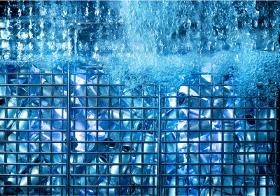
PERO AG
Germany
The less space between the parts, the more difficult it is to remove particles and contaminants with a wet medium. The handling of the parts and the design of the parts carriers are therefore important aspects for optimised cleaning. Wet media are used in units with 1, 2, 3 or even more baths where the parts are cleaned and rinsed, and, if required, treated with preservation agents.
Request for a quote
PERO AG
Germany
Wet media differ greatly as regards safe handling, service life and cost of treatment. Surface tension Degreasing properties Cleaning properties Drying properties Residues Filtration properties Bag filter Cartridge filter Distillation Screen basket filter Settling chamber Micro/Ultrafiltration Filling Stabilising Distilling ReFilling Stock bath Bath treatment/Titration Bath change Disposal
Request for a quote
PERO AG
Germany
Acidic, neutral or alkaline wet media Aqueous media remove dirt particles from surfaces and rinse them off. Aqueous detergents disperse particles, and form or separate emulsions. They act on the surfaces of parts. If required, aqueous media can be used to alter the surface properties of parts by passivation (phosphatising), pickling, etc. In all applications, the treatment of the medium itself is of crucial importance. Aqueous media are powerful detergents. Solvents are wet media that are able to dissolve substances without actually reacting with them. The most commonly used cleaning solvents are hydrocarbons and modified alcohols with a flash point > 55°C, and halogenated hydrocarbons. Solvents remove dirt particles from surfaces and rinse them off. Advantages Short cycle times, energyefficient drying, low solvent consumption, long medium service life and easy treatment.
Request for a quote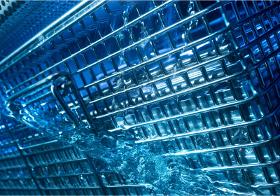
PERO AG
Germany
In industrial parts cleaning, wet media are used in 70 to 90 % of all cleaning processes. Wet media include aqueous solutions – similar to detergents we use to wash our dishes or laundry – as well as nonaqueous solvents. For each cleaning task, project engineers must choose the best wet medium, taking into account ecological and economic considerations. Workpieces and parts are produced in finetuned production processes that often require the use of special consumables and process chemicals. Parts are generally made from specific materials, and their contamination after machining is determined by the processes they have undergone. When assessing the environmental impact of cleaning media, one sometimes comes to surprising conclusions. First of all, the energy input and use of resources must be assessed.
Request for a quoteResults for
Industrial machines - Import exportNumber of results
49 ProductsCompany type